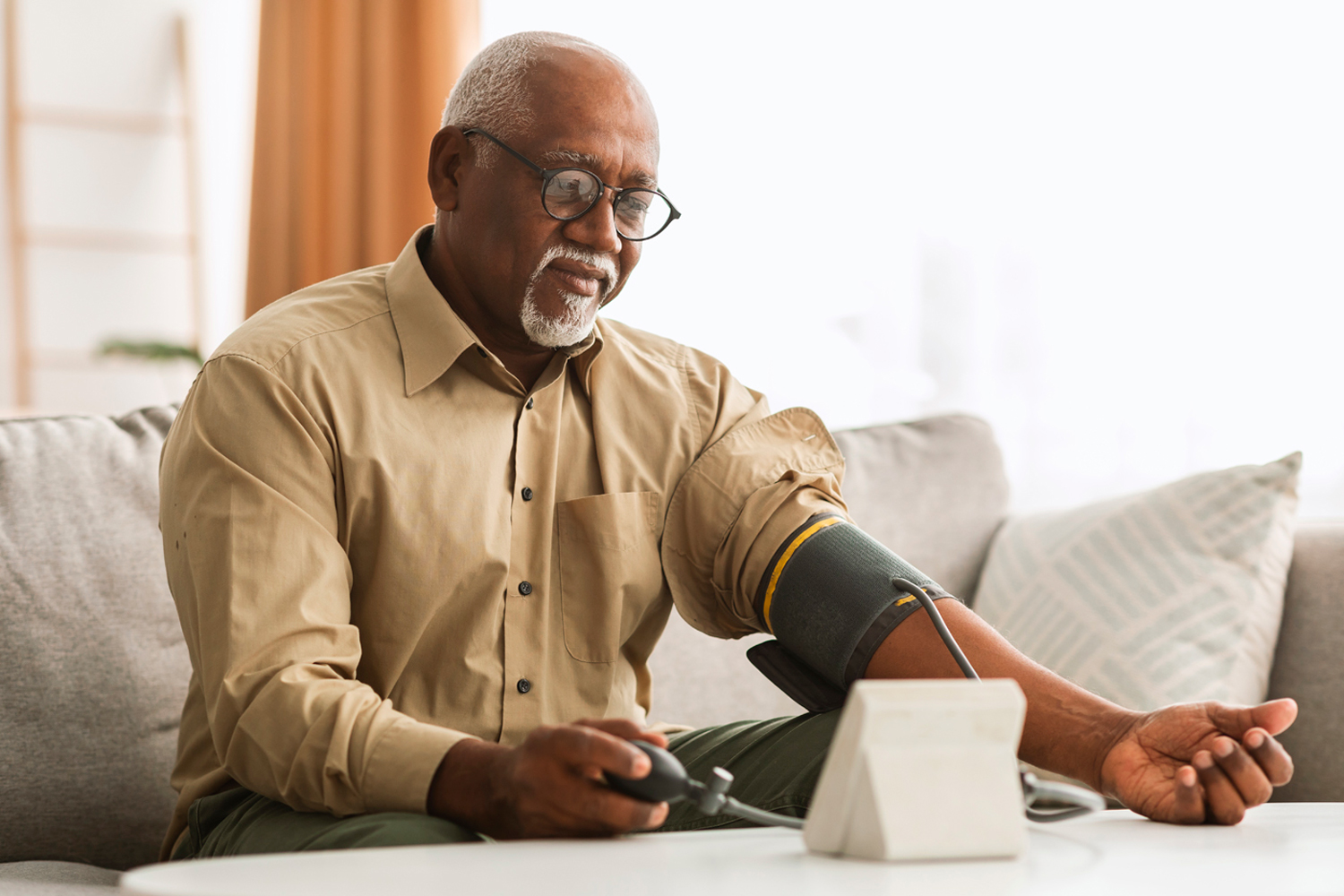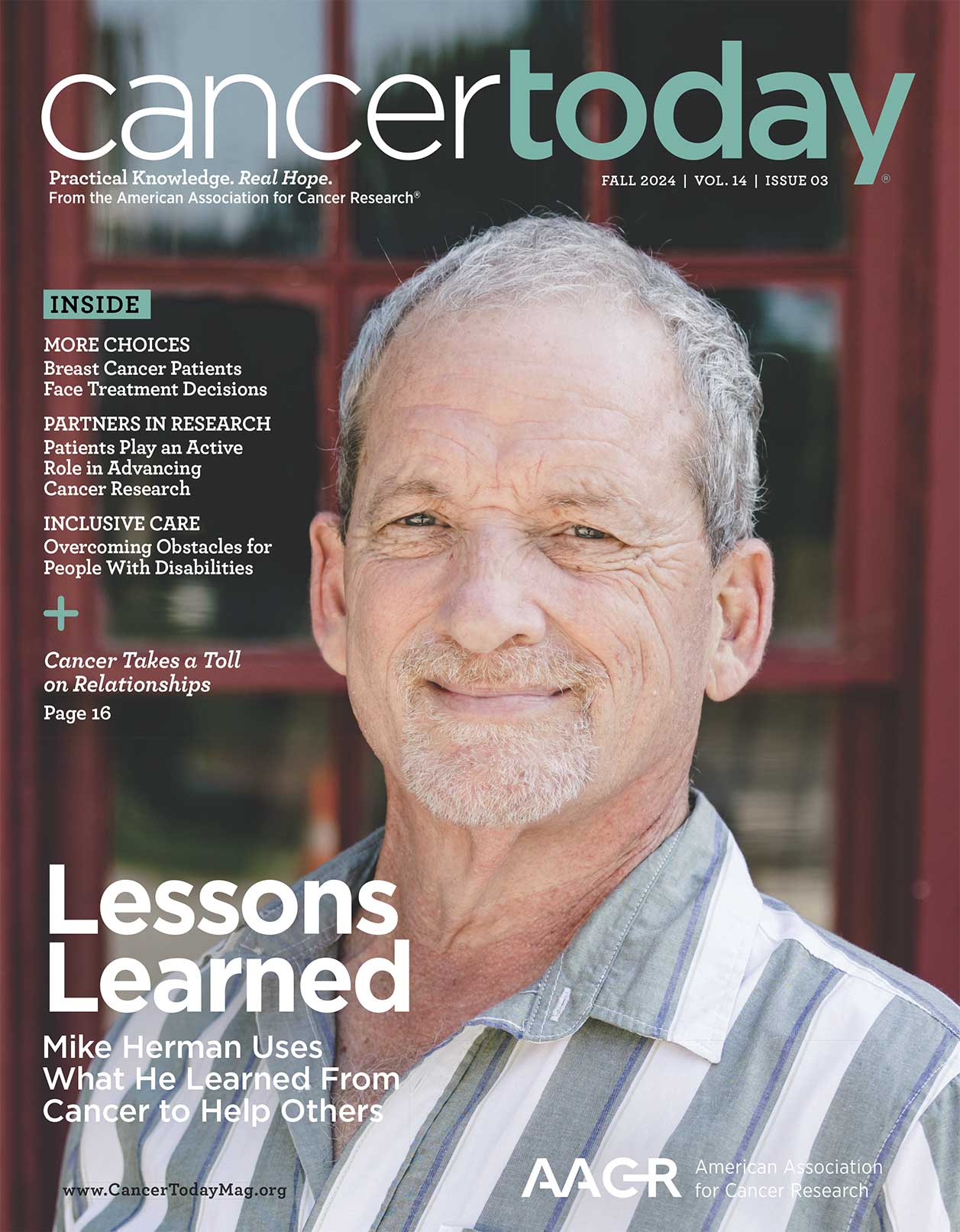EMPHASIZING THE HIGH PREVALENCE of cancer therapy-induced high blood pressure among cancer survivors, a new guideline by the American Heart Association (AHA) encourages physicians to have patients monitor their own blood pressure at home to help people avoid heart problems down the road. The AHA statement, issued Jan. 9, 2023, in Hypertension, stresses the importance of physician monitoring and identifies specific cancer therapies that are associated with high blood pressure.
People who have high blood pressure, also known as hypertension, are at increased risk of serious health problems, including heart disease, heart failure, stroke and kidney disease. In addition, patients with cancer who have or develop hypertension may need to take lower doses of cancer medications or increase the time between treatments. In general, studies suggest that cancer survivors have a higher risk of dying from cardiovascular disease in the first year after they receive a cancer diagnosis. This risk is also increased years after completing treatment, compared with the general population.
“Most oncologists are aware that many therapies can cause high blood pressure, but they may not realize how important close blood pressure monitoring is for patients, nor do they always coordinate blood pressure medications for these patients,” says Jordana Cohen, a kidney specialist at Penn Medicine in Philadelphia and the lead author of the statement. “We’d like to see more collaborative care in which oncologists work with primary care providers and hypertension specialists to minimize patients’ long-term cardiovascular toxicities.”
The statement serves as an important reminder, says Abhishek Kalla, a hematologist-oncologist at Ascension Saint Agnes Hospital in Baltimore who was not involved in drafting the guidance. “As oncologists, we’re always most concerned about cancer and the underlying disease, but as survivorship increases, our focus on related issues like blood pressure hasn’t always kept up,” he says.
The statement provided a review of cancer treatments that are likely to raise blood pressure. For example, research shows vascular endothelial growth factor (VEGF) inhibitors like bevacizumab, sorafenib and sunitinib can cause hypertension in 20% to 90% of patients. VEGF inhibitors, which work by blocking the growth of blood vessels that support tumor growth, are used to treat several malignancies, including liver, kidney and thyroid cancers, as well as gastrointestinal stromal tumors.
Another class of drugs known to increase blood pressure is Bruton tyrosine kinase (BTK) inhibitors, which are used to treat chronic lymphocytic leukemia, mantle cell lymphoma and a rare type of non-Hodgkin lymphoma called Waldenström macroglobulinemia. In a 2019 review of randomized clinical trials, 71% of patients with blood cancer who took the BTK inhibitor ibrutinib developed new-onset hypertension.
In addition, just over half of patients taking the platinum-based chemotherapies cisplatin, carboplatin and oxaliplatin developed treatment-related hypertension, according to the statement. These drugs are indicated to treat several cancers, including mesothelioma and testicular, bladder, ovarian, breast, colorectal and non-small cell lung cancers.
The statement urges physicians to use routine blood pressure measurement to assess the need for medications or referrals. “The basic paradigm for many oncologists has been that, as long as the patient’s vital signs aren’t above or below a certain range, they’re OK to receive therapy,” Kalla says. “But knowing what we know about some of the drugs, we, as oncologists, should be paying more attention to blood pressure.”
In some cases, a patient’s nervousness in the hospital or doctor’s office can also spike blood pressure, says Cohen, which can lead to physicians overtreating hypertension. “People with cancer are known to have a higher risk of having white-coat hypertension, which is when blood pressure is elevated in the office but normal the rest of the time,” she says. “But we can’t just chalk up high readings to white-coat hypertension. If it’s a real elevation, we need to know.”
That’s why the statement stresses that people with cancer should monitor their blood pressure at home throughout treatment, especially if they are taking medications known to increase blood pressure, like VEGF or BTK inhibitors. “If you’re starting a new cancer therapy that’s known to cause high blood pressure, we recommend checking it daily,” says Cohen. “If you’re on a lower-risk medication, you may only need to check it a few days a month.”
For at-home monitoring, Cohen recommends a monitor that uses an upper arm cuff instead of a wrist monitor, unless the person is unable to use the upper arm cuff. “If you have issues with lymphedema in your arms or can’t find an upper arm cuff that is comfortable, using a wrist monitor is fine,” she says.
To get an accurate reading over the course of a day, people can check their blood pressure two times each morning, Cohen suggests. “It’s best to do it before taking any medications, especially blood pressure medications,” she says. “Then check it again two times before going to bed, back-to-back about a minute apart for each of those double readings.” The AHA and the American College of Cardiology characterize normal blood pressure as under 120/80 mm Hg. There isn’t guidance on optimal blood pressure targets for people with cancer specifically, but the AHA report notes a good general goal is to keep it under 130/80 mm Hg.
For people who are looking to purchase a blood pressure monitor, Cohen recommends checking validatebp.org, a website sponsored by the American Medical Association that lists more than 40 at-home models that have been vetted for accuracy.
Cancer Today magazine is free to cancer patients, survivors and caregivers who live in the U.S. Subscribe here to receive four issues per year.





